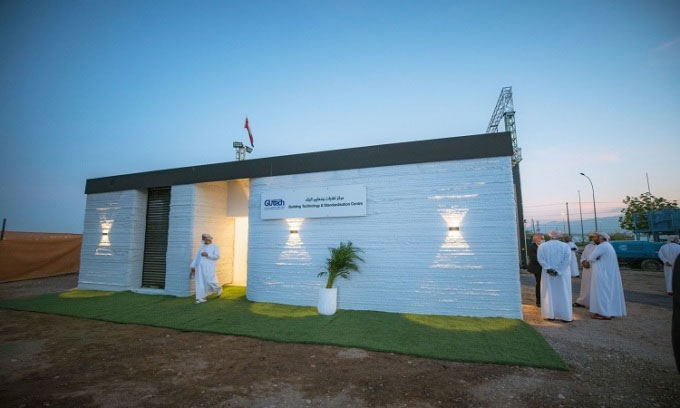Engineers from CEMEX and COBOD develop a new material mix to construct a 190m2 3D-printed house using real concrete.

The completed 3D-printed house made of real concrete. (Photo: COBOD)
3D printing technology is being utilized with a variety of materials, including steel. However, in construction, the ink used for 3D printing is always a dry mix of mortar materials, which not only limits the scale of technology application but also increases construction costs. CEMEX from Mexico has partnered with Construction of Buildings on Demand (COBOD), a 3D printing technology company from Denmark, to address this issue.
Previous construction projects using 3D printing technology employed special mixes to handle the slow-drying characteristics of conventional concrete during the construction process. This is a significant obstacle as wet concrete has different load-bearing capabilities compared to dry concrete. CEMEX and COBOD’s solution to overcome this challenge is a new cement mix called D.fab, which contains additives that allow for pouring concrete and accelerate the drying process. Henrik Lund-Nielsen, founder and CEO of COBOD, stated that this method facilitates the use of locally available materials in construction.
Another advantage of D.fab is its ability to significantly reduce construction costs. While the dry mix used for 3D printing costs between $791 and $1,018 per cubic meter, using D.fab lowers the cost to $67 to $101 per cubic meter. Additionally, the construction time is also considerably shortened.
The research team tested the technology by constructing a 190 m2 house, the largest 3D-printed structure made of real concrete, in Muscat, the capital of Oman. The D.fab additives were sourced from Europe. The house was printed in two phases. In the first phase, a local workforce was trained on the printing process. They then carried out the entire printing process themselves. The project took only 5 days to complete, with costs reduced to $1,810 compared to $22,627 if a dry mix had been used for 3D printing.


















































